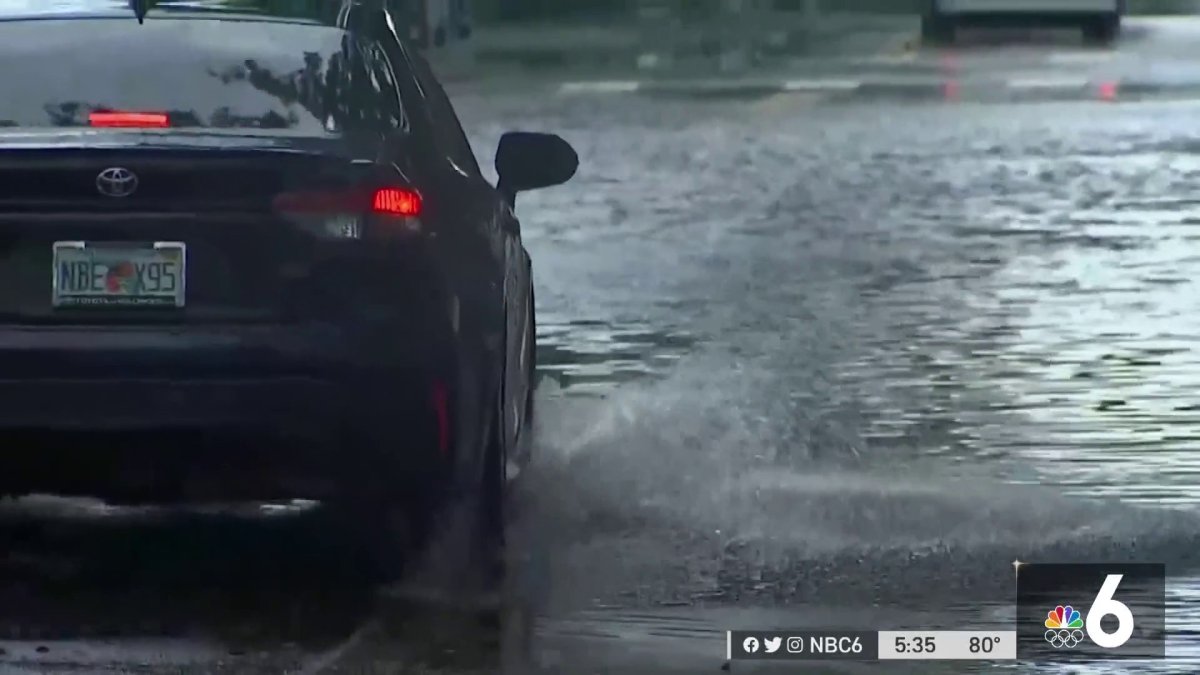
Flood insurance policies backed by FEMA are set to change next year due to increased flood risk caused by sea level rise and climate change. NBC 6’s Phil Prazan reports
Despite calls to delay a massive change to flood insurance policies across the country, the Federal Emergency Management Agency continues to roll out its new flood risk methodology.
“Risk Rating 2.0” will cause nearly all flood insurance policy premiums to change over the next year. Most will become more expensive in Florida because of new environmental factors like sea level rise and climate change. Some policies have already decreased with the first phase of the change. The second phase for renewal policies kicks in April.
Florida Sen. Marco Rubio has called on FEMA to delay the change again but in an interview with NBC 6 a senior executive with the agency said that’s not going to happen.
“I can confidently say the prices are fair and reflect the property’s unique flood risk,” said David Maurstad, senior executive of FEMA’s National Flood Insurance Program.
Get South Florida local news, weather forecasts and entertainment stories to your inbox. Sign up for NBC South Florida newsletters.
About 17,000 new policies have already been issued under the new methodology and premium decreases have already kicked in, according to Maurstad.
According to FEMA data, 80% of Florida policies will see an increase in premiums over the next year. Many could be the maximum under federal law, 18%. Most will increase up to $120 a year. About 20% of policies in Florida will see a decrease.
Local
NBC 6 Investigators covered the issue from Opa-locka to Cutler Bay this fall. According to an analysis of FEMA data by NBC 6, almost 450,000 policies in Miami-Dade, Monroe, and Broward counties will see an increase in premiums. Almost 123,000 policies in those counties will see a decrease.
The change will shift the financial burden away from low-value properties to more expensive homes in areas with a higher risk of flooding. FEMA’s new methodology now factors in environmental elements such as rainfall, climate change, and sea level rise. The older policies were based on location and elevation. Over the past fifty years, FEMA has paid out more in claims than the agency has collected in premiums.
Rubio joined with eight other senators to ask FEMA to delay the change, fearing up to 20% of policyholders will drop out of the program because of the cost.
“We are extremely concerned about the administration’s decision to proceed forward with the implementation of this program without first determining an alternative that avoids the prospect that hundreds of thousands of families will be inclined to forfeit flood insurance on their homes,” wrote the senators, including New Jersey Democrat Bob Menedez and Louisiana Republican Bill Cassidy.
The letter asks the Biden administration to be more proactive in making sure people know the change is coming. Rubio has also filed a bill to reauthorize the National Flood Insurance Program through December 3.
Since the first phase has already become reality, FEMA officials argue it’s too late to make a change.
For the first time, some policies could see a decrease in premiums, including 120,000 policies in South Florida. Maurstad calls that change "historic."
"We are able to eliminate the inequity in the program now where lower value homes are paying more than they should and higher value homes are paying less than they should," said Maurstad.
Many policies seeing an increase under "2.0" would have seen an increase under the old methodology as well.
FEMA calculated the new flood risks using licensed datasets from three private companies: Air Worldwide, KatRisk, and CoreLogic. Staff then combined that data with two climate models FEMA developed using government data from the US Geological Survey, NOAA, and the US Army Corps of Engineers.
With so many properties at risk of flooding, Florida will be one of the most impacted states. The maximum premium increase allowed under current law is 18% per year.
"Delaying just hurts the people that 'Risk Rating 2.0' is designed to assist. They’ve been overpaying for their flood insurance, many of them, for a number of years," said Maurstad.
"Risk Rating 2.0" was delayed by the Trump Administration in 2019 amid blowback from coastal, flood prone states. In April, the second phase of the new methodology kicks in, changing rates for all renewal policies.